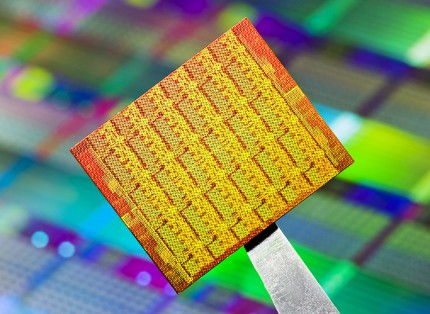Even though the majority of the developments coming out of the Supercomputing Conference 2010 in New Orleans are highly theoretical, they give an interesting peek into the sorts of technology that might one day see the light of day. The latest of these pieces of futurology comes from Intel, who has demonstrated a CPU design that could scale to more than 1,000 cores.
The design is the basis for the company's Single-Chip Cloud Computer (SCC) which was revealed last year in the form of a prototype 48-core, 125W, 45nm processor. The CPU got its name because of the way that the cores are linked together via a high-speed on-chip network - much the same as nodes in a data-centre would be connected.

Since performance wasn't particularly important - this is just a research exercise, after all - the engineers used a derivative of the original Pentium processor design for each individual core. Pairs of cores were then tiled in a six-by-four array and connected by a 'mesh' on-chip network via an on-board router.
What all this means is that instead of relying on cache to communicate - and running into problems ensuring that each core has equal access to on-board memory, known as cache coherency - messages can be passed directly between processing cores. In terms of programming and design, the chip acts very much like a 48-node cluster, rather than a traditional CPU.
According to Intel's Timothy Mattson, the result is an "arbitrarily scalable" architecture "that could, in principle, scale to 1,000 cores". Only at this point would the size of the mesh begin to negatively impact performance.
Chips like the SCC are obviously still experimental, and Intel has no plans to start including them on any roadmaps at this point. However, it provides an interesting take on how the difficulties of adding more cores onto a single CPU might be tackled.
More details on the chip can be found in a paper (PDF) published by the researchers for the conference. Alternatively, IDG has posted an in-depth write-up of the technology.













